Kale: a nutritional powerhouse and an ideal candidate for the regenerative garden
Exploring the many medicinal/nutritional gifts offered by kale, it's place in the regenerative garden and how to preserve and create with it in the kitchen
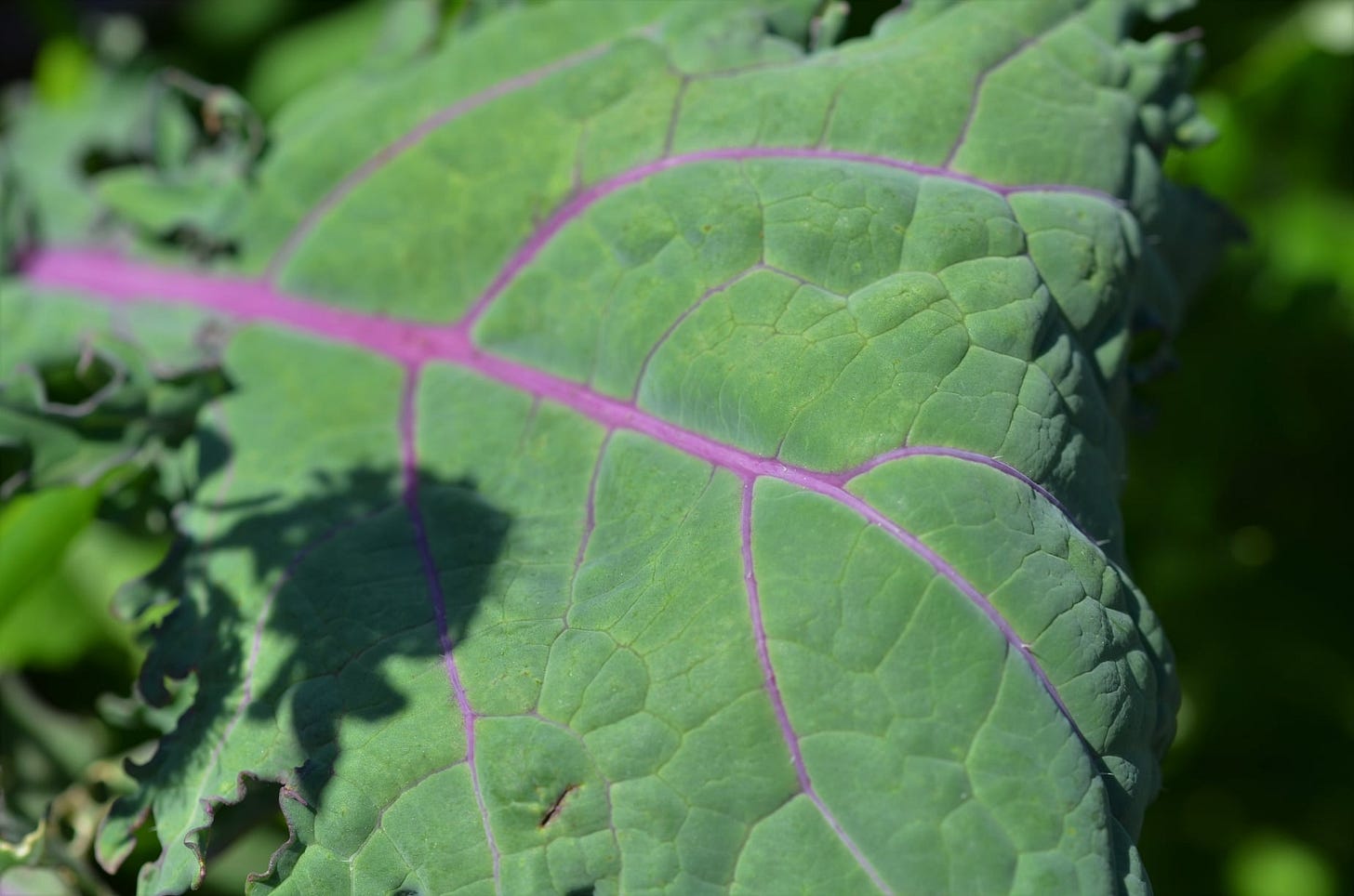
It is definitely one of the healthiest and most nutritious plant foods in existence. Kale is loaded with all sorts of beneficial compounds, some of which have powerful medicinal properties.
History of Kale: Kale originated in the eastern Mediterranean and Asia Minor, where it was cultivated for food beginning around 2000 BC. Curly-leaved varieties of cabbage already existed along with flat-leaved varieties in Greece in the 4th century BC. These forms, which were referred to by the Romans as Sabellian kale, are considered to be the ancestors of modern kales.
The earliest record of cabbages in western Europe is of hard-heading cabbage in the 13th century. Records in 14th-century England distinguish between hard-heading cabbage and loose-leaf kale. Russian kale was introduced into Canada, and then into the United States, by Russian traders in the 19th century.
I love how we can incorporate kale into self-sowing raised bed companion plantings of annuals and just let it do it’s thing without any work (receiving access to kale from ten months of the year to year round, depending on the season) without having to replant.
But before we get into exploring kale in the context of the garden (and in the kitchen) let us explore some the many health benefits kale offers when included in our deity regularly.
Here are some of the many health benefits of Kale:
1. Kale Is Among The Most Nutrient-Dense Foods on The Planet:
Kale is a popular vegetable and a member of the cabbage family. It is a cruciferous vegetable like cabbage, broccoli, cauliflower, collard greens and Brussels sprouts. There are many different types of kale. The leaves can be green or purple, and have either a smooth or curly shape. The most common type of kale is called curly kale or Scots kale, which has green and curly leaves and a hard, fibrous stem.
A single cup of raw kale (about 67 grams or 2.4 ounces) contains:
Vitamin A: 206% of the DV (from beta-carotene)
Vitamin K: 684% of the DV
Vitamin C: 134% of the DV
Vitamin B6: 9% of the DV
Manganese: 26% of the DV
Calcium: 9% of the DV
Copper: 10% of the DV
Potassium: 9% of the DV
Magnesium: 6% of the DV
It also contains 3% or more of the DV for vitamin B1 (thiamin), vitamin B2 (riboflavin), vitamin B3 (niacin), iron and phosphorus This is coming with a total of 33 calories, 6 grams of carbs (2 of which are fiber) and 3 grams of protein. Kale contains very little fat, but a large portion of the fat in it is an omega-3 fatty acid called alpha linolenic-acid. Given its incredibly low calorie content, kale is among the most nutrient-dense foods in existence. Eating more kale is a great way to dramatically increase the total nutrient content of your diet.
2. Kale Is Loaded With Powerful Antioxidants Like Quercetin and Kaempferol: Kale, like other leafy greens, is very high in antioxidants. These include beta-carotene and vitamin C, as well as various flavonoids and polyphenols. Antioxidants are substances that help counteract oxidative damage by free radicals in the body.
Oxidative damage is believed to be among the leading drivers of aging and many diseases, including cancer. But many substances that happen to be antioxidants also have other important functions. This includes the flavonoids quercetin and kaempferol, which are found in relatively large amounts in kale. These substances have been studied thoroughly in test tubes and animals. They have powerful heart-protective, blood pressure-lowering, anti-inflammatory, anti-viral, anti-depressant and anti-cancer effects, to name a few.
Test-tube and animal studies suggest that these compounds may help ease inflammation, support heart health, slow the growth of cancer cells, and protect against chronic disease (Source 1, Source 2, Source 3).
3. Eating Kale Can Help You Manage Your Cholesterol:
Cholesterol has been made out to be the enemy, but it is important for several bodily functions. Cholesterol helps synthesize certain acids that aid in the digestion of dietary fats. When you eat something with fat in it, your liver uses up some of the cholesterol in the blood to make bile acids. Those bile acids help the fat be absorbed through the gut. Then, the bile acids return to the bloodstream. Bile acid sequestrants are compounds that prevent the bile acids from being reabsorbed after they are used for digestion. Because the digestive system then has less bile available, the liver must synthesize more from cholesterol. This process lowers levels of cholesterol that circulate through the blood. Kale contains bile acid sequestrants and is one of the most effective vegetables for binding bile acids.
One study in 149 people with metabolic syndrome found that consuming 14 g of kale powder every day for 8 weeks significantly reduced levels of LDL (bad) cholesterol, along with blood pressure, belly fat, and fasting blood sugar levels.
Kale was found to bind about 25% of the bile acids that Cholestyramine, a bile-acid-sequestering medication did. This is promising for the use of kale in general management of cholesterol. One study found that drinking kale juice every day for 12 weeks increased the ‘good’ type of cholesterol by 27% and lowered LDL cholesterol (the ‘bad type of cholesterol) by 10%.
4. Kale Can Help To Enhance The Function Of Your Immune System
An apple a day may keep the doctor away, but a handful of kale could work just as well, if not better.
Vitamin C is an important water-soluble antioxidant that serves many vital functions in the body’s cells.
For example, it is necessary for the synthesis of collagen, the most abundant structural protein in the body (Source).
This makes kale an excellent addition to a healthy, well-rounded diet, alongside other fruits and vegetables rich in vitamin C.
One cup of raw kale contains about 80 mg of vitamin C. This is 8 times the amount of vitamin C found in a cup of raw spinach. One cup of orange segments contains only slightly more vitamin C than kale, about 95 mg. That apple that supposedly keeps you healthy only contains about 6 mg of vitamin C. Vitamin C helps ward off the common cold and studies show that it is beneficial when it comes to preventing serious symptoms from development when one is exposed to a wide range of other viruses. However, because vitamin C is such a potent antioxidant, it can also help lower the risk of other diseases, including:
Autoimmune disease
Cardiovascular disease
Some cancers
Kale is also rich in polyphenolic antioxidant compounds. Flavones like apigenin and flavonols such as isorhamnetin, kaempferol, quercetin, etc. As well as Di-indolyl-methane (DIM), a metabolite of indole-3-carbinol, which is an effective immune modulator, antibacterial and antiviral agent through its action of potentiating "Interferon-Gamma" receptors.
This is why I included Kale in my list of foods that help to optimize the function of the innate immune system in my article titled Natural Pathways For Optimizing The Innate Immune System.
5. Kale Can Lower Your Risk of Cancer
One of the best benefits of kale (and other cruciferous vegetables!) is that it has cancer-fighting properties. As well as being high in antioxidants, kale contains other compounds which have been shown to potentially prevent and fight cancer.
Kale is loaded with a compound called sulforaphane. Numerous studies have suggested that sulforaphane can be used to fight cancer at a molecular level. It is also high in a substance called indole-3-carbinol, which research has suggested could help prevent cancer.
And if kale couldn’t seem like more of a cancer-fighting superfood, it’s also a good source of dietary fiber, which a 2015 study found could help reduce the risk of colorectal cancer.
Cancer is characterized by the overgrowth of certain cells. Many of the substances in kale are linked with a lowered risk of cancer. The benefits of the antioxidants in kale also help to restore DNA damage that can lead to cancer. Many studies have investigated the role of Brassica vegetables, like kale, in protecting against cancer. Research has found that people who eat cruciferous vegetables, such as kale and broccoli, have a lower risk of cancer.
6. Kale Contains High Levels of Vitamin K
One cup (67 g) of kale contains over 6 times the RDA for Vitamin K (547 mcg or 684%). Vitamin K is essential for helping the blood to coagulate (as part of a healing process after trauma).
Vitamin K is an important nutrient.
It is absolutely critical for blood clotting, and does this by “activating” certain proteins and giving them the ability to bind calcium (Source).
The form of vitamin K in kale is K1, which is different than vitamin K2. Vitamin K2 is found in fermented soy foods and certain animal products and helps prevent heart disease and osteoporosis (Source).
There are different types of vitamin K. The type of vitamin K provided by kale is vitamin K1. People who take blood thinners may need to check with a doctor before consuming too much kale.
7. Kale Lowers Your Risk of Diabetes and Heart Disease:
Kale contains many minerals that some people are deficient in. The magnesium in kale has been shown to protect against type 2 diabetes and heart disease. The potassium in kale has also been associated with a reduced risk of heart disease as well as a reduction in hypertension. Some researchers have hypothesized that calcium, which is plentiful in kale, may help reduce the risk of heart disease by lowering cholesterol and the ability of the body to absorb fat. However, studies have found inconsistent evidence linking calcium to improved heart health. Researchers have raised concerns that taking too much calcium in supplement form could actually increase the risk of cardiovascular disease. For this reason, consuming calcium through foods may be safer than taking it as a supplement. Oxalate may prevent minerals from being absorbed. Kale is low in oxalate compared to other leafy greens.
When you’re trying to lose weight, it helps to understand which foods can fuel you without adding large amounts of calories. The fiber and water content in kale can make you feel full even though it only has 33 calories per cup. Kale also contains 2 gram of protein per cup. If you saute the kale down, you could easily consume 4 to 5 cups at once. This could deliver 10 grams of protein and 35 grams of complex fibrous carbohydrates, which help you feel full. Romaine lettuce, which is often consumed during weight-loss efforts, only contains 1 gram of protein and 2 grams of complex fibrous carbohydrates in one cup. While it’s low in calories, it’s not likely to help you feel as satisfied as kale. Kale is considered to be a food with low energy density. Studies show that low-energy-density foods can help you lose weight.
10. Kale is Good For Your Eyes
It’s time to open your eyes to all the incredible benefits of kale! Kale is rich in vitamin C, zinc and beta-carotene - all of which have been said to improve eye health, especially while sight and eye health can decline while aging.
Kale is also high in lutein and zeaxanthin, which are two antioxidants that research has shown are effective lowering the risk of common eye disorders such as cataracts and macular degeneration.
11. Kale Is a Good Source of Minerals That Most People Don't Get Enough Of
Kale is high in minerals, some of which many people are deficient in. It is a good plant-based source of calcium, a nutrient that is very important for bone health and plays a role in all sorts of cellular functions. It is also a decent source of magnesium, an incredibly important mineral that most people don't get enough of. Eating plenty of magnesium may be protective against type 2 diabetes and heart disease. Kale also contains quite a bit of potassium, a mineral that helps maintain electrical gradients in the body's cells. Adequate potassium intake has been linked to reduced blood pressure and a lower risk of heart disease. One advantage that kale has over leafy greens like spinach is that it is low in oxalate, a substance found in some plants that can prevent minerals from being absorbed.
12. Kale Helps Maintain A Happy Digestive System And Can Help Detoxify Your Body.
This dark leafy green helps you to maintain a healthy digestive system. The fibrous vegetable is great for aiding digestion and the body’s detoxification process. Kale also contains a unique sugar called sulfoquinovose, which increases good bacteria in your gut.
As we go about our everyday lives, we are exposed to toxins in our environments as well as the products we use and consume. We can benefit from routinely cleansing our bodies of these toxins to restore balance and health. One way you can do this is simply by eating more kale. Kale contains special compounds made from glucosinolates called "isothiocyanates," or "ITCs." These compounds have powerful detoxification properties. You already know that kale contains antioxidants that can combat radicals in the body. Now you know a second way in which kale helps to protect your body. First, the antioxidants destroy the dangerous toxins. Then the ITCs help to flush them out of your body. Additionally, ITCs help to slow the growth of tumor cells and stimulate their destruction.
13. Kale has powerful anti-inflammatory properties:
While inflammation does play an important role in bodily health, when the fires burn out of control, they can cause pain, discomfort, and chronic health issues Chronic inflammation is a condition which is associated with many diseases in the body, a few examples being arthritis, IBD, and ulcerative colitis. Inflammation can also be an acute problem associated with injury or illness. One way to combat the damage caused by excessive inflammation and to help mitigate the symptoms and progression of inflammatory diseases is to eat an anti-inflammatory diet. Kale has powerful anti-inflammatory properties and can be a key component in such a diet. Part of the reason for this is that kale has an ideal ratio of omega-3 and omega-6 fatty acids. Omega-6 fatty acids worsen inflammation while omega-3 fatty acids curb inflammation. As the research above reports, western diets are out of balance. Most of us are eating too many foods which are rich in omega-6 fatty acids and are not getting enough omega-3 fatty acids in our diets. By eating more kale and fewer processed foods which contain high amounts of omega-6, you are helping to balance out your fatty acid intake. The result is a diet which is less inflammatory. If you can make your ratio ideal across the board by eating other healthy foods like kale, you might even achieve an anti-inflammatory diet. This diet will help to stave off the fires of inflammation now and over the years to come. This in turn will help to ensure your health now and in the future.
14. Eating kale regularly can help protect your brain health.
With diseases like Alzheimer’s and other forms of dementia on the increase with no known cure, it is more important than ever to take steps to protect brain health. When it comes to doing that, kale is one of the best things you can eat. It contains 45 or more flavonoids, which can reduce your risk of getting a stroke. You also now know that kale has a high omega-3 fatty acid content. Not only are omega-3 fatty acids powerful anti-inflammatory compounds, but they also are vital for brain health, improving and protecting memory, function, and performance. Kale’s antioxidants also have anti-inflammatory effects, and may boost cognitive function following traumatic brain injury.
15. Consuming kale is good for fortifying your bones.
Kale is rich in calcium. One cup of chopped kale contains 90.5 mg of calcium. Bones which are deficient in calcium have a low bone mass, which means that they are prone to fractures as well as health problems like osteoporosis. You also now know that kale contains a very high amount of vitamin K. Insufficient vitamin K intake also has been linked to an increased risk of fractures. Vitamin K also can help to boost your body’s absorption of calcium while reducing urinary excretion of the same. Indeed, according to the source just linked, you can get about the same amount of absorbable calcium from a cup of cooked kale as you can from a cup of cow’s milk. So kale helps to protect bone health through the combined action of vitamin K and calcium.
16. Kale improves the appearance and health of your hair and skin.
If you have been looking for a nutritious food that can nourish your hair and skin, kale is a great choice. Kale contains a carotenoid called beta-carotene. Your body converts this carotenoid into vitamin A. Vitamin A (retinol) can help to reduce the appearance of fine wrinkles in the skin, reducing the visible signs of aging. Retinol also may be useful in promoting hair growth.
Garden Crop Cultivation and Companion Planting
Let us now explore Kale’s place in the regenerative garden.
With so many benefits, kale is a useful addition to anyone’s kitchen. Fortunately, the plant is also relatively simple to grow and can adapt to climate and soil conditions on most permaculture plots. In fact, kale is arguably the hardiest member of the plant family it belongs to – the brassicas, along with the likes of broccoli, cabbage and collards.
Planting
Kale is usually planted as a winter or spring vegetable, for which you want to plant it out so that it matures in the cooler or cold weather. Exactly when this is will depend on the climatic conditions in your location, but will typically be sometime between March and April for spring and July and September for fall/winter, with an earlier planting time for areas where winter comes early. You can plant earlier for a fall harvest, although the flavor of kale is enhanced by exposure to winter. You can also grow it in the summer but in the hotter weather the leaves become more bitter (though they are still very nutritious and fully edible). I like to plant seeds directly into the soil, often using a ‘throw sow’ and lightly raking them in to an intended garden bed (as I find self seeded plants develop into more vigorous and robust adult plants).
Though starting seeds off in the greenhouse or indoors in pots until they are 18 inches or so high can mean a faster rate of establishing plants in the garden. Most people plant individual specimens approximately 12 inches from each other.
Once established if you let kale go through till the next season it will come back and provide delicious smaller leaves before setting buds and blossoming with little yellow flowers.
These little flower buds and the flowers them selves are edible and I like to constantly pinch off the in mature flower buds from the top of second year kale plants and add to salads (they have a nice nutty broccoli like flavor).
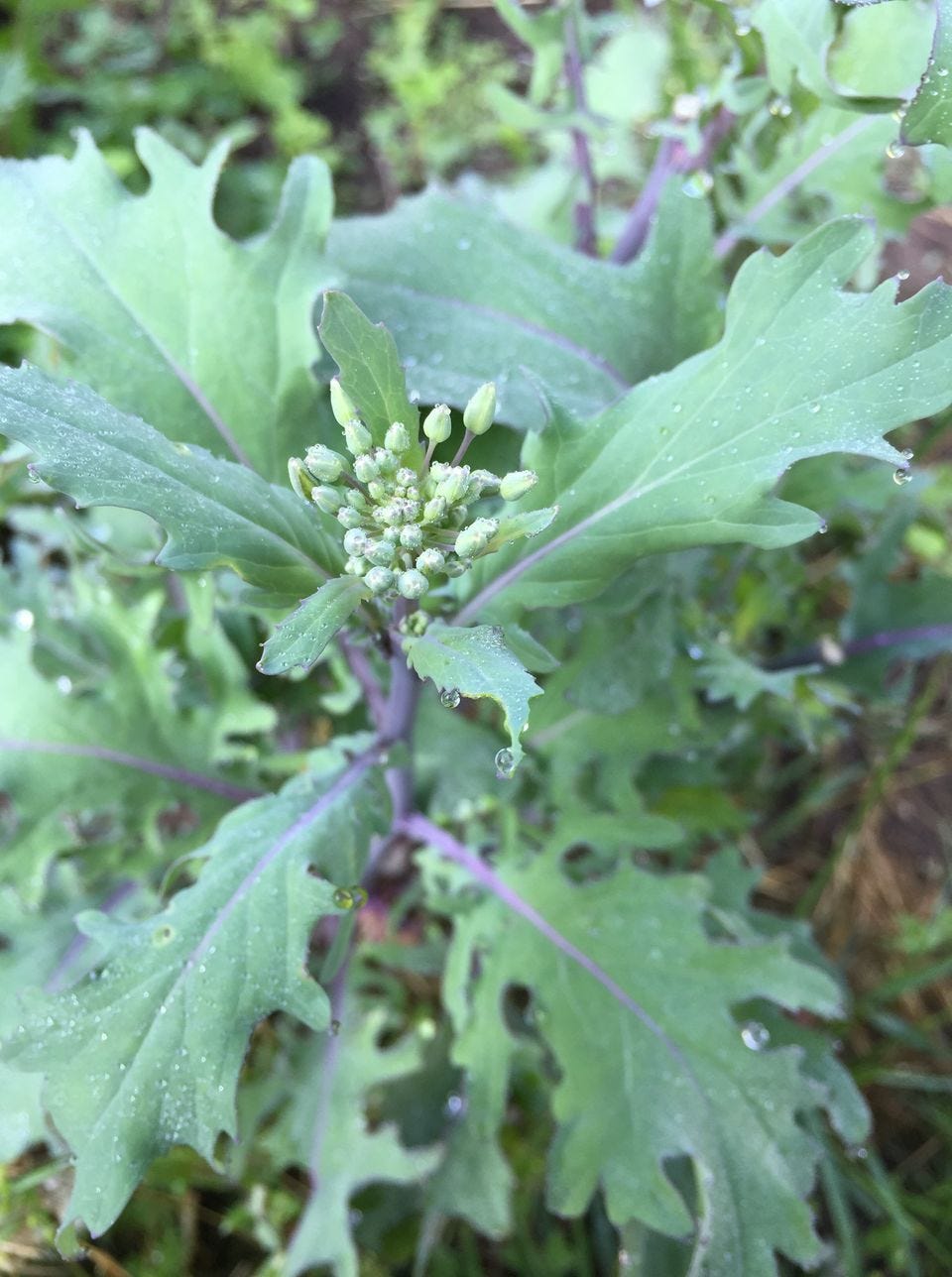
If you allow the flowers to bloom they will likely be pollinated and set little seed pods.
I allow these seed pods to mature on a few plants each year so that the kale plants can self-seed for next year.
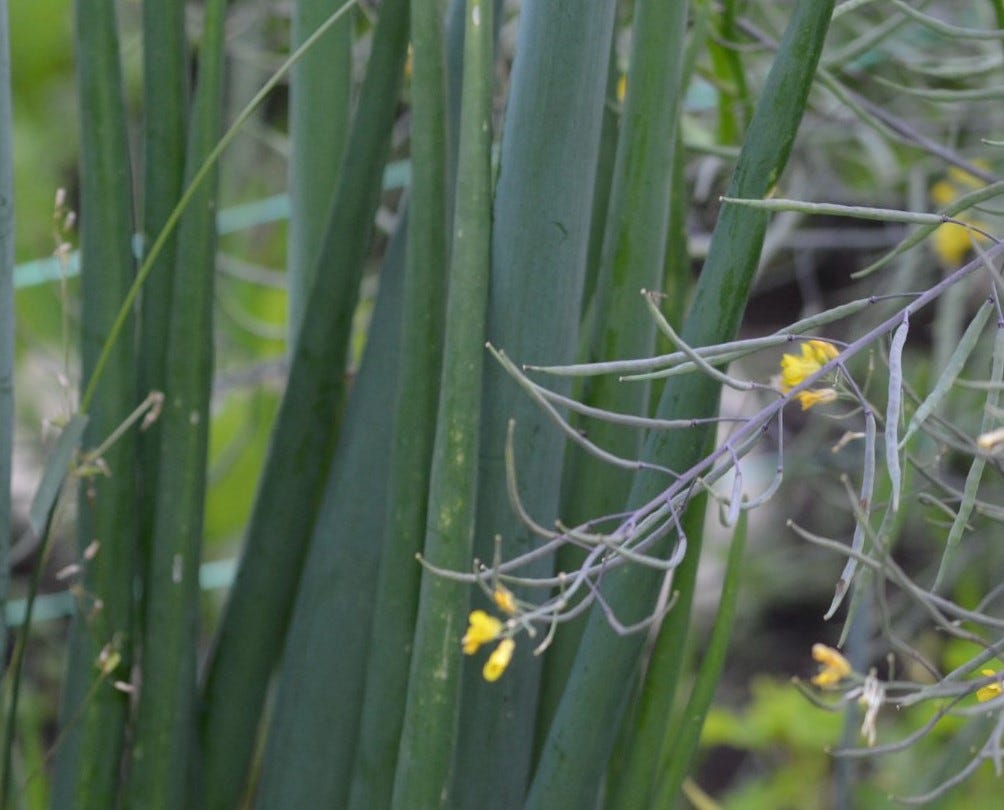
As companions, kale favors beets, onions, broccoli, amaranth, radishes, celery, potatoes, dill, chamomile, sage, thyme, mint, pennyroyal, rosemary, lavender (Chamomile – Is thought to improve the flavor of cabbages and kales). If you don’t have much garden space, you can grow kale in pots; just treat the soil as you would for specimens in garden beds, and make sure the plant has around 6 square inches of space to grow into. Kale favors a slightly acidic soil, ideally with a pH of between 5.5 and 6.8. If your soil is on the alkaline side, adding wood chips, sawdust from untreated wood or organic sulfur will help reduce it. Keeping the soil well nourished with organic compost will also help create good conditions for kale to grow in.
Harvesting and Seed Saving

Kale can be eaten at all stages of growth (from first year seeds sprouting to 2nd year plant blossoms and seed pods). Kale is a cold-hardy vegetable that is best planted in early spring or autumn. Cool weather brings out the sweet, nutty flavor of this highly nutritious green (and also increases the production of antioxidants such as anthocyanin in some kale varieties).
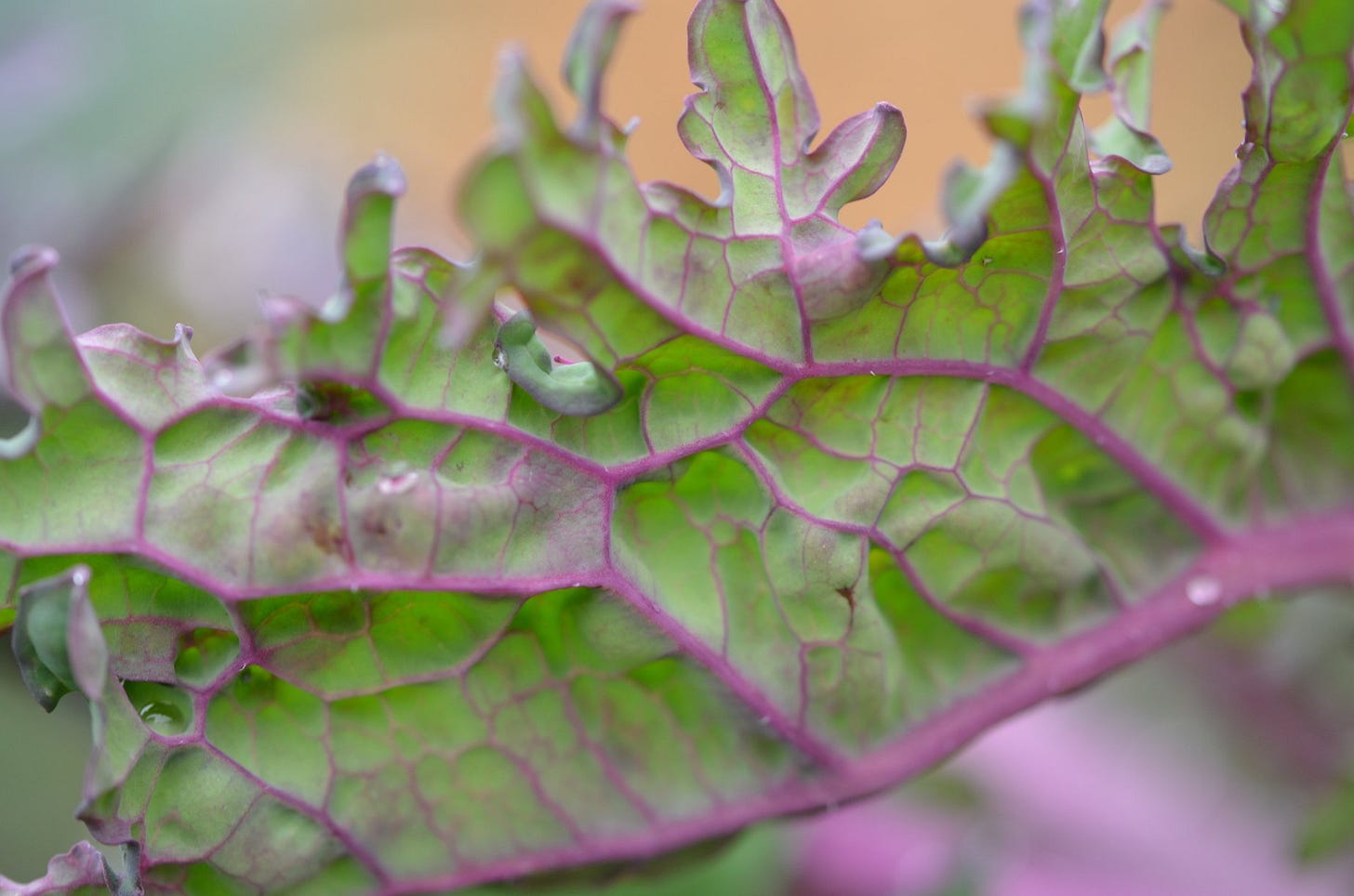
In your first year growing kale you will most likely want to wait until the leaves get at least the size of your hand before harvesting.
If you harvest the large most outer leaves (leaving the new growth pushing up from the core of the plant intact) you can have a continual supply of leaves from about two months after planting seeds until your plants get buried in deep snow.
Once kale is established and comes back the second year (pushing out small leaves and then stalks with blossom buds, followed by blossoms opening and then seed pods forming) it can readily seed itself in place and produce hundreds of seedlings the following year in good soil conditions. Once a ‘self seeding kale forest’ is established you will have so much kale you can harvest it from the micro greens to baby greens stages and have delicious snacks, salad or smoothie ingredients from early spring onward.
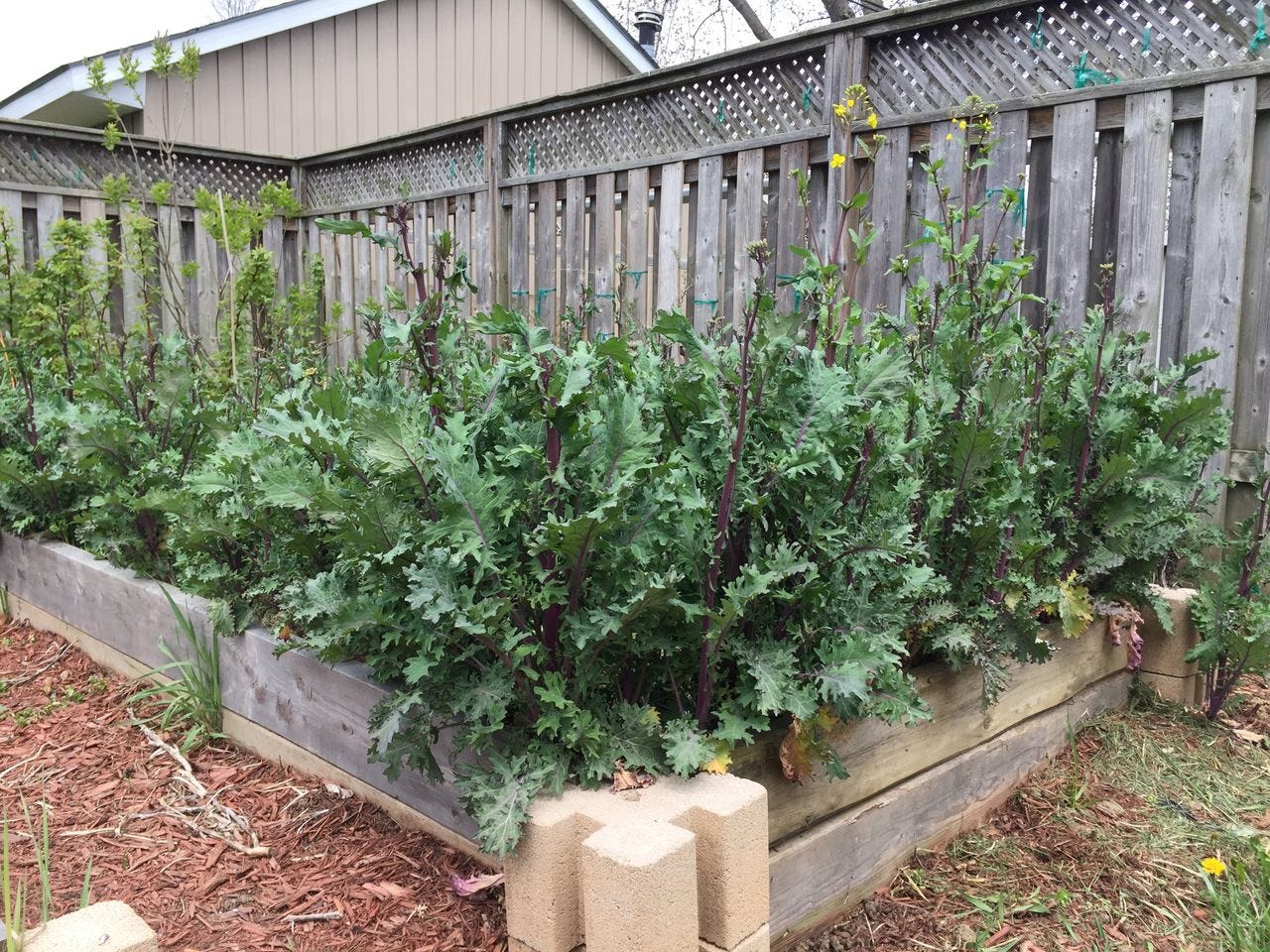
Harvesting Kale Sprouts: When you have enough seed to save for not only yourself (and for sharing with others) but also for sprouting you can grow an ultra nutrient dense food any time of year inside (see page 64 for sprouting info). If your second year plants have dropped lots of seeds around the base and you want to thin them while stacking functions you can pluck them from the ground (or cut many with scissors) and have a super delicious and nutritious snack at the same time.
How to harvest Kale Microgreens: Harvesting means cutting the stem and taking the stem and the leaves together; you can eat both parts.
How to Harvest Kale Baby Greens: If you’re looking to grow baby kale, plants will be ready to pick and enjoy 25 to 30 days after they are sown.
The harvest period usually occurs once in late spring or early summer, and again in autumn.
It is worth noting there isn’t a perfect time to pick this green. If you like smaller leaves, collect them earlier when they are younger.
For more info on kale sprouts, microgreens and seed saving, here is an video I made about those processes many years ago:
How to Harvest Mature Kale: All varieties of this vegetable are harvested in the same way.
For mature plants, grasp the stem of a mature outer leaf at the base of the main stalk and pull down and out, away from the center, until it breaks. Repeat this process to pick all the greens you want.
Make sure to leave at least five central leaves on the plant so it can continue to photosynthesize and produce new growth.
Never pick the innermost portion with the smallest leaves, as that’s where new growth originates.
If your soil is soft or your plants are newly established, you can use a knife or scissors instead of your hands. This prevents you from pulling the whole plant out of the ground or snapping the main stalk.
If you see discolored or heavily insect-eaten leaves, make sure to remove these and add them to the compost pile. This allows the plant to put its energy into new and healthy growth. I also sometimes strip the leaves with heavy insect damage from the rigid central stalk (that is unaffected by insects) wash thoroughly and then dice for stir fries or add whole to enhance veggie broths.
Second year kale leaves are delicious in early spring and if you keep pinching off the forming flower buds you can get a steady flow of delicious perfect salad/sandwich sized leaves until mid summer (this requires vigilance as each time you pinch a flower head off two more come up in its place and once it flowers leaves begin to shut down). Unopened flower buds are delicious and somewhat similar to broccoli, opened flowers are also excellent eaten raw and young immature seed pods make a nice protein rich snack if you have tons growing and can afford to eat some like we do.
How to Save Kale Seeds:

To ensure viable seeds, save seeds from at least 5 plants. When maintaining a variety over many generations, save seeds from 20-50 plants. If you’re saving seeds for genetic preservation of a rare variety, save seeds from 80 plants.
Kale is often only grown as an annual even though kale actually a biennial (that means it has a life cycle that takes two years to complete.) In the first year, kale produces an abundance of leaves. It keeps producing leaves through the winter hardiness zones 7 through 10. In colder climate zones, (depending on variety) kale can survive deep freezes and come back from the stalk or base in the following spring all on its own, but is almost guaranteed to come back if mulched or kept under row covers.
Second Year: Overwintered kale grows new leaves and sends up flower stalks with pretty yellow flowers in the spring of its second year. When the flowers die, they leave seed pods that you can break open when ripe for a new crop of kale seeds.
I like to keep pinching flower heads and eating for a month or so after they first emerge to stimulate many flower heads to multiply and then I let the plants set seed in one big wave as to optimize my seed harvesting efforts. I allow the seed pods to develop and stay attached onto the plants until about 25% go dry and can be cracked open easily. At that point I snip off the seed heads and hang in my garage upside down to dry for a couple weeks to a month before separating seeds from pods. I like to use hand shears and separate the individual pods from the stalks and then pop them open by hand on a plate so I can select the best quality seeds for continuing on my kale line. It takes some time and patience, but I find it to be a therapeutic process in the dead of winter.
If one seeks expediency and/or has a massive amount of seeds to save you can add the dried seed pods to a pillow case and then wack it with a stick for a few minutes which separates the majority of the seeds from their pods after which you can reach down to the bottom and scoop up most of the seeds with minimal debris.
Once you have separated the seeds from the pod/stalk debris to the extent of your preference you can let them sit in a cool, dark, dry place to further desiccate (for extending shelf life). After a week or two of that you can seal them in jars or bags for long term storage in a cool dark place. Adding some powderized bio-char to your seeds in their long term storage container and shaking to mix and coat seeds will increase their shelf life and viability significantly through further uniform desiccation. I have sprouted seeds after 4 years stored without bio-char and gotten 75% plus germination rates so they can last a long time if you go the extra mile and store in ideal conditions.
Creating With Kale In The Kitchen And Preserving For Year round Access To It’s Many Health Benefits:
I will now share some pics of and links to recipes I have created with our Kale harvests over the years in the hopes it helps to inspire you to create with your harvests.


Above pic shows some of the ingredients that go into a soup I like to call Midnight Miso
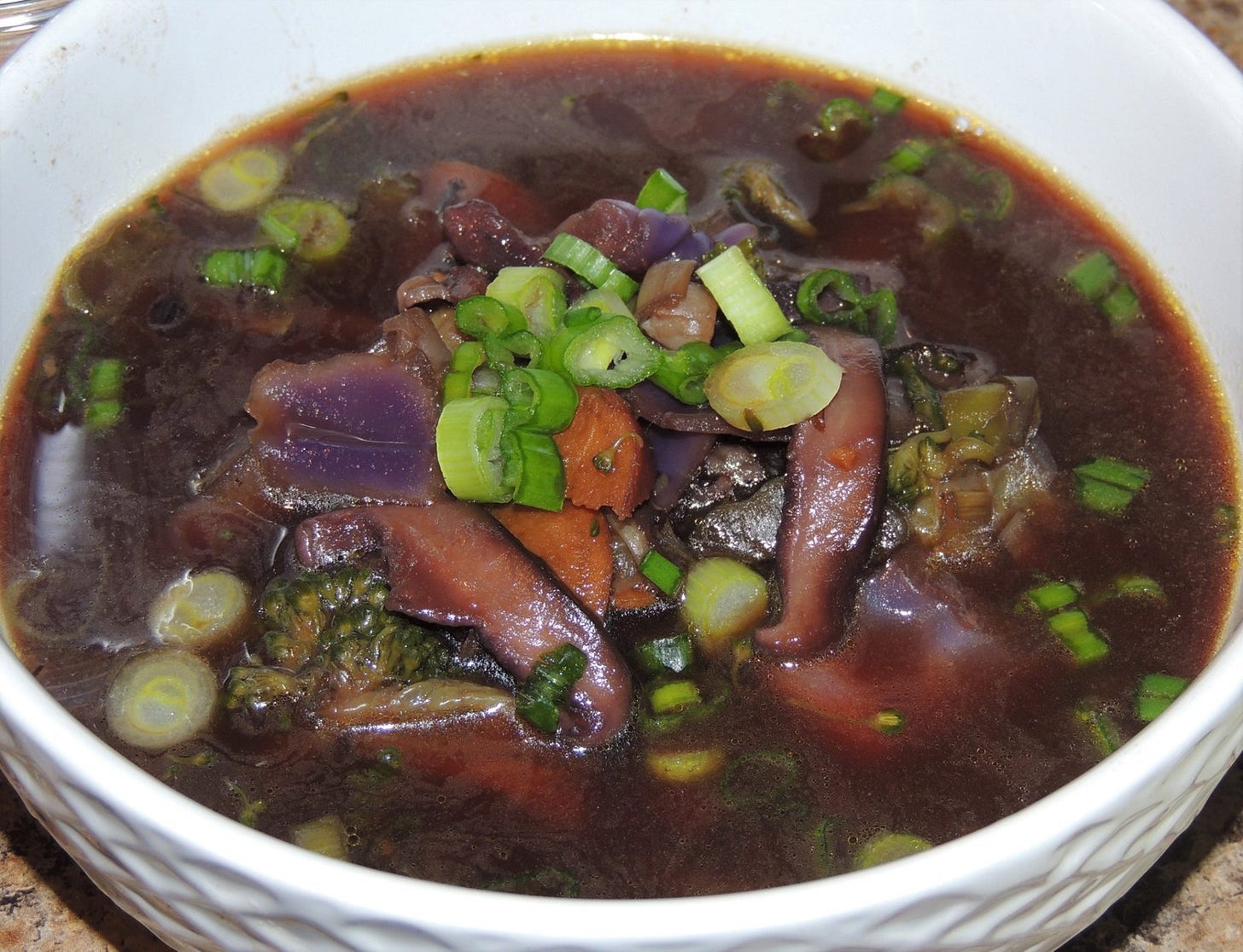
Above pic (and two below pics) show an experimental Moroccan Sprouted Split Pea Soup we made in our slow cooker. Instead of a ham bone we used chaga chunks and kombu strips (for smoky flavor and unami). Also, as it was a Moroccan themed soup, I included diced fresh turmeric rhizome, home made harissa (a North African spice mix), chopped figs and instead of using raisins (as are often included in Moroccan stews) I added some of our home grown dried red goji berries.
The slow simmered Chaga chunks, Kombu strips (thick kelp) and goji berries not only provided rich flavor but also took the nutritional content of this soup off the charts and into the realm of medicinal super foods.
Other ingredients include: celery, leeks, onion, parsley, diced kale stems, nettle powder, thyme, carrots, black pepper, a bay leaf, sweet potato and diced Tunisian Baklouti peppers.



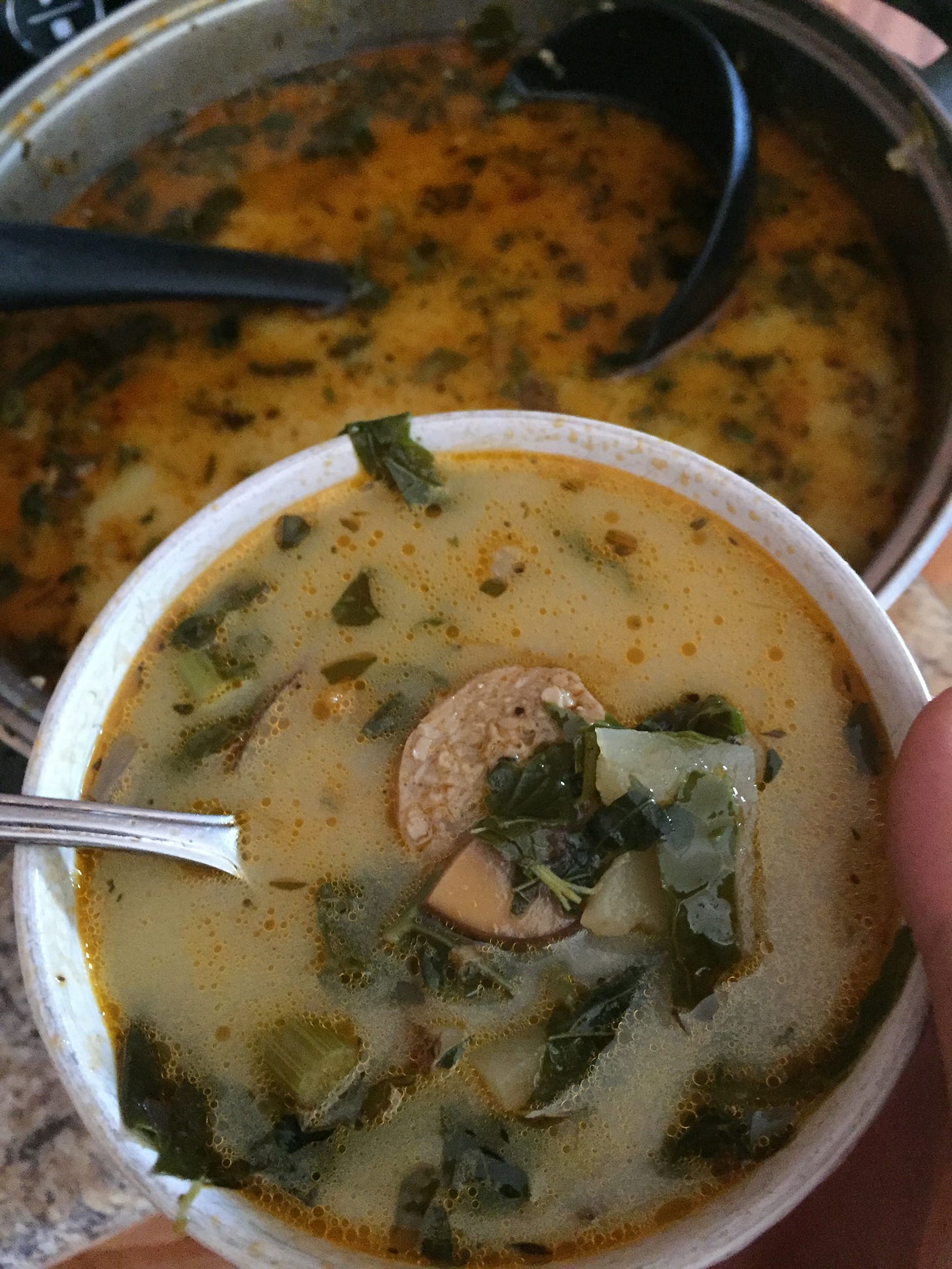
Our take on Zuppa Toscana starts with a whole lot of kale, egytpian walking onions, russet and fingerling potatoes, fresh garden herbs vegetarian italian "sausage" and ends with a splash of goat milk to add a nice creamy consistency.
The end result is a solid soup that fulfills one's apatite after a hard day's work and tastes great too! The recipe is also be available in hardcopy in my book.
Fermentation is also a great way to preserve your kale harvest. I like to make kale infused sauerkrauts and kimchis with our harvests and when we get an especially huge harvest I make Gundruk.
The above pic shows some of the ingredients that go into making our Purple Dragon Chi. The batch shown in these pics included our homegrown dried Black Goji Berries, Hot peppers, young ginger rhizome, wild Nova Scotian Dulce (red seaweed), pan toasted sesame seeds, Red Russian Kale, ambrosia apples and fresh nettle. Including the black goji berries has resulted in an amazing royal purple colored brine (due to the high anthocyanin content of the berries). It is day three of the fermentation now and the brine is already tasting heavenly. I am super excited to age a jar of this for a couple weeks to blend and strengthen the flavors.
The above picture shows three different kinds of Koji (Aspergillus oryzae) based ferments including Miso, Shio Koji and Shoyu Koji as well as two wild fermented lactic acid bacteria based ferments.
One of the jars shown is Gundruk (day 7 of fermentation). The jar with the green leafy material (right middle) contains kale leaves spontaneously fermenting in their own juices (aka "Gundru").
Also shown is a jar of Wild fermented kale stem pickles (day 7 of fermentation). The jar with the pinkish/red brine and elongated stems contains Red Russian Kale blossom stems and blossoms spontaneously fermenting in a light salt brine. In the image above you can see that that lactic acid bacteria have pulled the anthocyanin out of the brightly colored red russian kale stems and into the brine. Smaller stems are tender and delicious and larger ones are great for soups.
Our self sowing red russian kale plants are often so vigorous we cannot keep up with preserving it all in soups, ferments and/or giving it away. But through freeze drying and powderizing kale we can harvest it in big waves, easily preserve and then have access to (and/or be able to share) its potent nutrition when ever we want. While most years I would be fine with just composting that which we cannot find the time to preserve or share.. I feel like these times when food prices are skyrocketing so fast are different so I am grateful to be able to have this option now.
Definitely gonna do some big batches of kale and other heavy nutrient dense producers in the garden this year and make powderized versions.
If 97% of the nutrition of the kale was preserved by the freeze dryer (and i have no reason to believe it was not) I estimate this raw red russian kale powder in the pics below has roughly this per teaspoon (% in daily suggested nutrient intake for Canada standards):
- Vitamin A: 160%
- Vitamin C: 200%
- Vitamin K: 881%
- Vitamin B-9 15.5%
- Vitamin B-3: 7%
- Vitamin B-5: 7%
- Vitamin B-6: 11%
- Vitamin B-2: 27%
- Vitamin B-1: 9%
- Potassium: 7%
- Calcium: 25%
- Copper: 6%
- Iron: 20%
- Magnesium: 8%
- Manganese: 40%
- Phosphorus: 8%
- Selenium: 1.6%
- Zinc: 3.5%
- 3 grams of protein
The kale powder is also likely rich in polyphenolic antioxidant compounds. Flavones like apigenin and flavonols such as isorhamnetin, kaempferol, quercetin, etc. As well as Di-indolyl-methane (DIM), a metabolite of indole-3-carbinol, which is an effective immune modulator, antibacterial and antiviral agent through its action of potentiating "Interferon-Gamma" receptors
My Interpretation Of Some Of The Wisdom Kale Offer’s Us:
Red Russian Kale won`t only survive the frost, it can survive minus 25 Celsius and keep on growing! The resilience of life is unbounded, and as such the abundance of life in this universe is also unbounded. The day when humanity reaches past arrogance, fear, malice, and short sightedness is the day when this world will be ready to be introduced to the thriving interstellar community that is all around us.
Beyond resilience of the physical is resilience of the heart. This is the courage to be warm when you are surrounded in coldness.. to shine brightly even in the midst of darkness.. and to care with indifference all around you. It means having the resilience to continue to hope and dream in a world steeped in doubt. It is the kind of courage that drives you to stand up and speak the truth in times when conformity and subterfuge are the norm. It is that little voice that reminds you to choose love, kindness, and humility despite being surrounded by a modern day society that tells you to choose ego. It is that leap of faith you take when open your heart even when the risk of hurt is great. These are the kinds of courage and resilience that are rarer than great intelligence or bravery on a battlefield, and they are the things this world needs most.
When I took the time to really pay attention to the gifts kale embodies I came to realize that when one combines a concept called Gift Economics with the covenant of reciprocity one can tap into and share exponential abundance when one grows kale from seed, shares those seeds and encourages others to do the same.
I decided to do a thought experiment to compare an investment of kale seeds into a gift economy vs the fiat currency value of a package or kale seeds in a bank over seven years and I discovered after seven years continuing with a ‘pay it forward model’ investing in the earth (with kale seeds and sharing the resulting abundance) compared to investing in a bank you would have this:
Bank total (money value accessible by one): $6.17
Earth total (latent collective money value) : $30,000,000.00
For the nitty gritty on how I go those numbers check out this post:
The Best Investment On Earth, Is Earth
While I was sorting kale seeds I had saved from our garden a few years back I was thinking about how I come across a lot of people who see the spiritual, psychological, emergency preparedness or (at the least) the nutritional value in gardening, but for some reason think it’s not financially viable and use that as an excuse to opt out of even trying. Wh…
I am wishing you all many bountiful kale harvests and I would love to hear about your favorite ways to enjoy kale in recipes in the comment section below! :)





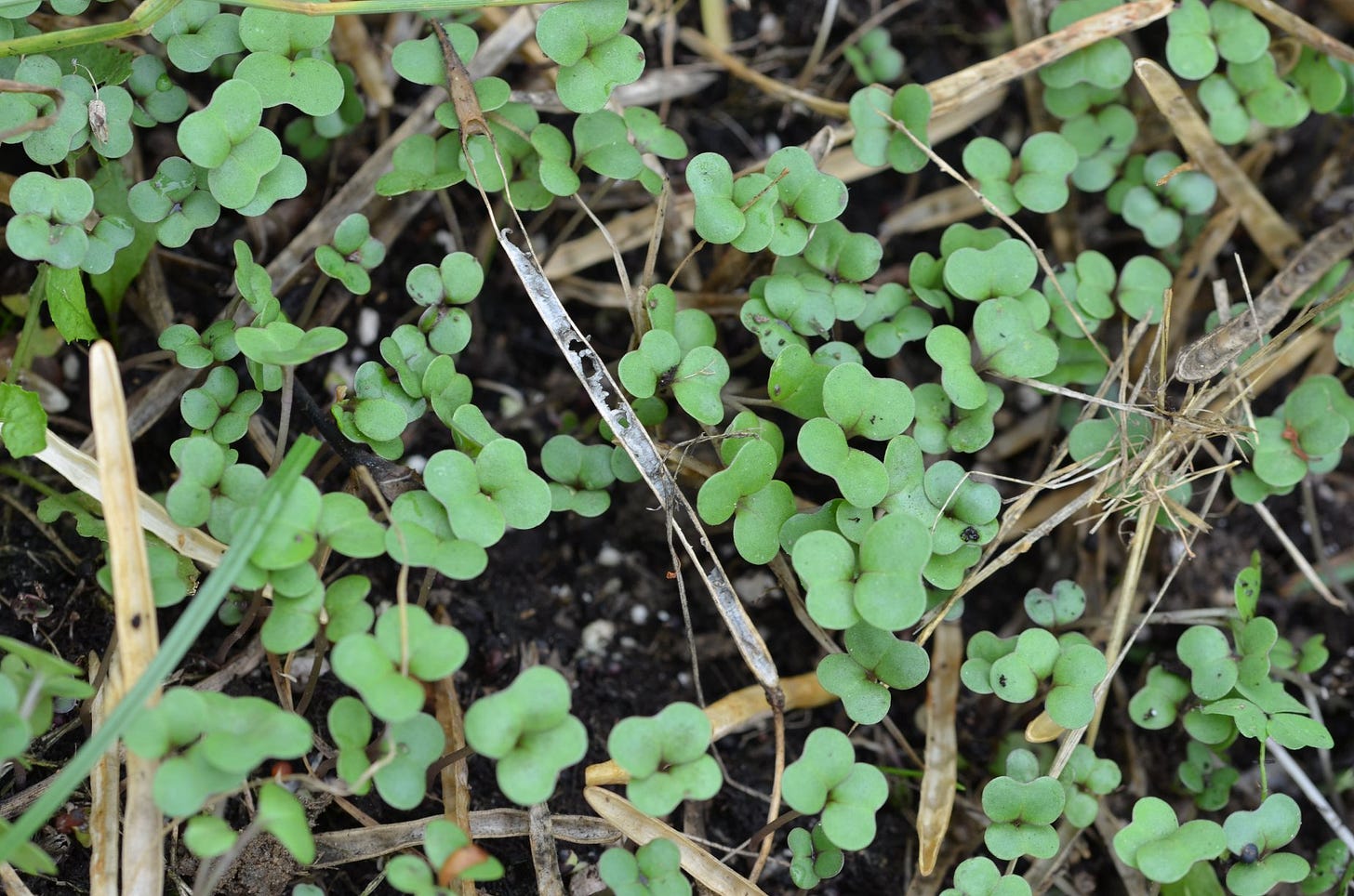
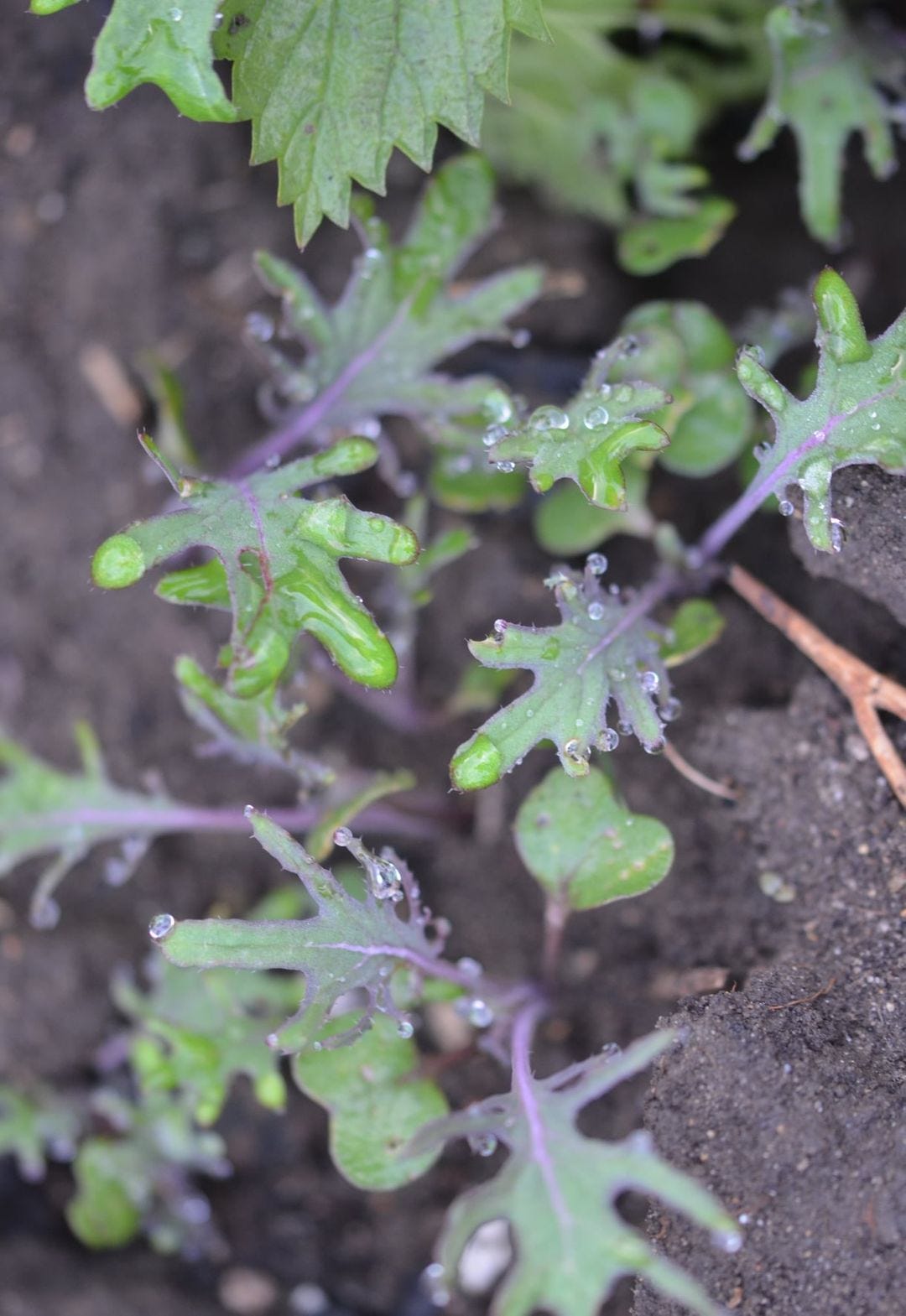
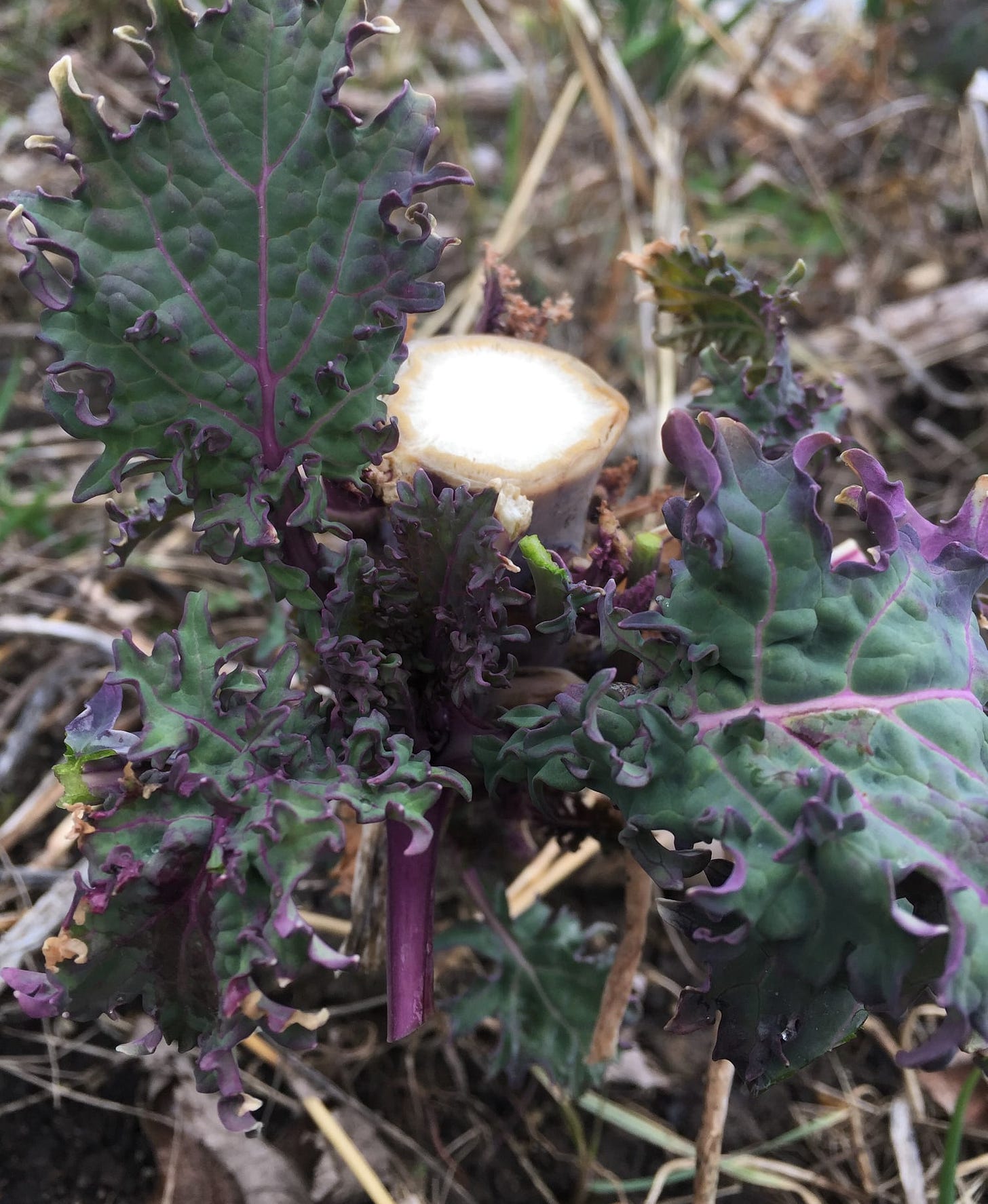


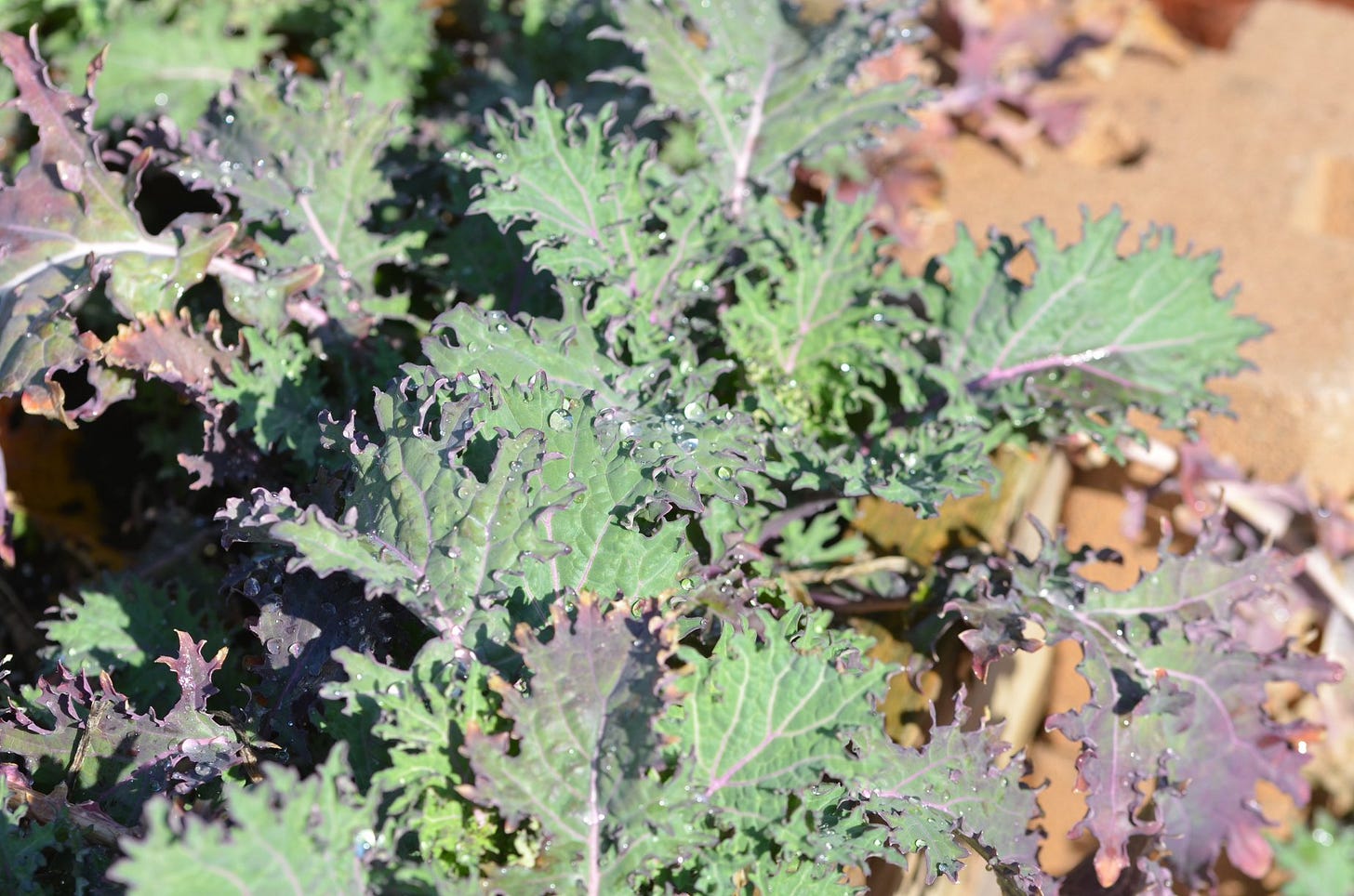
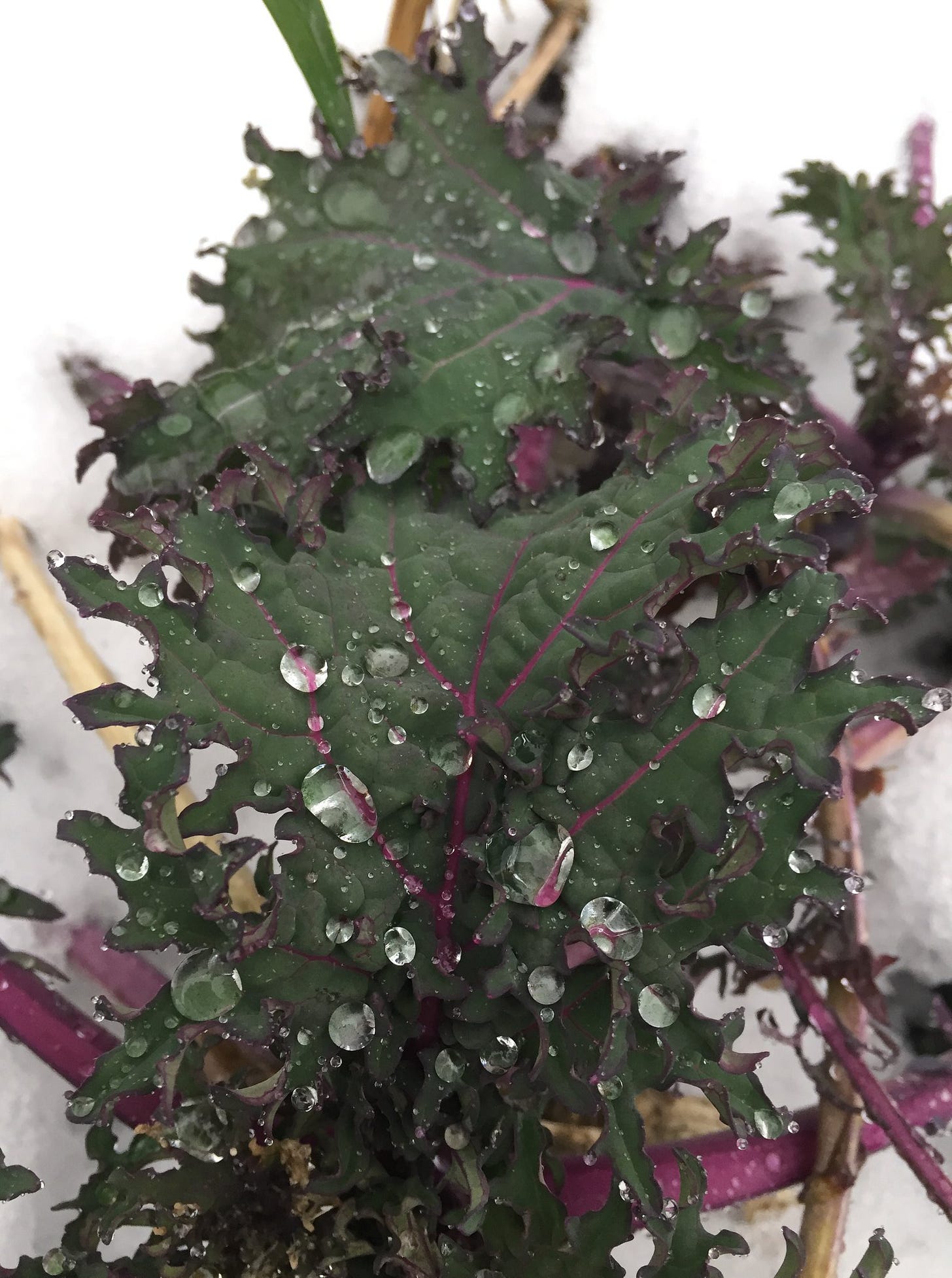


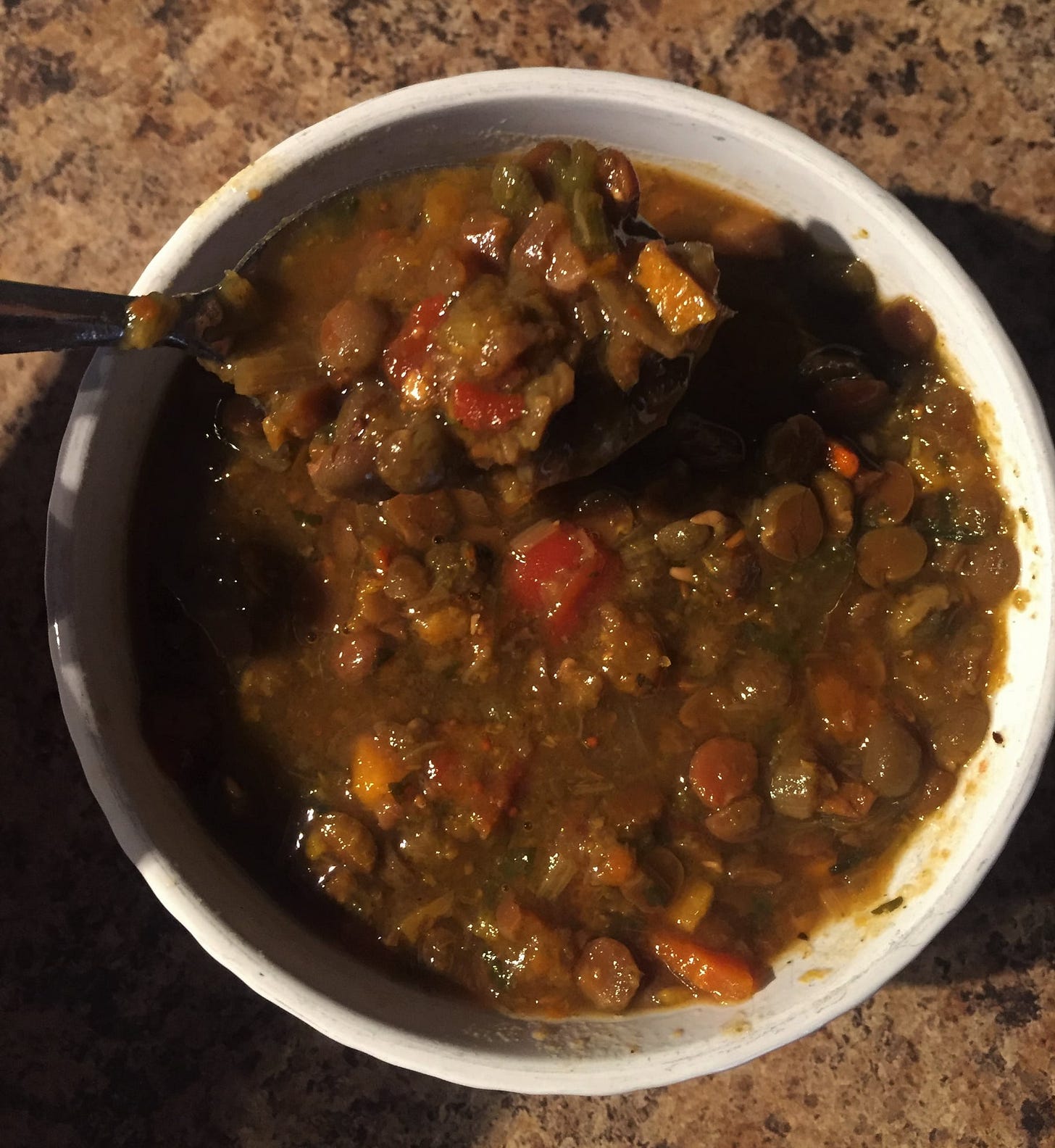
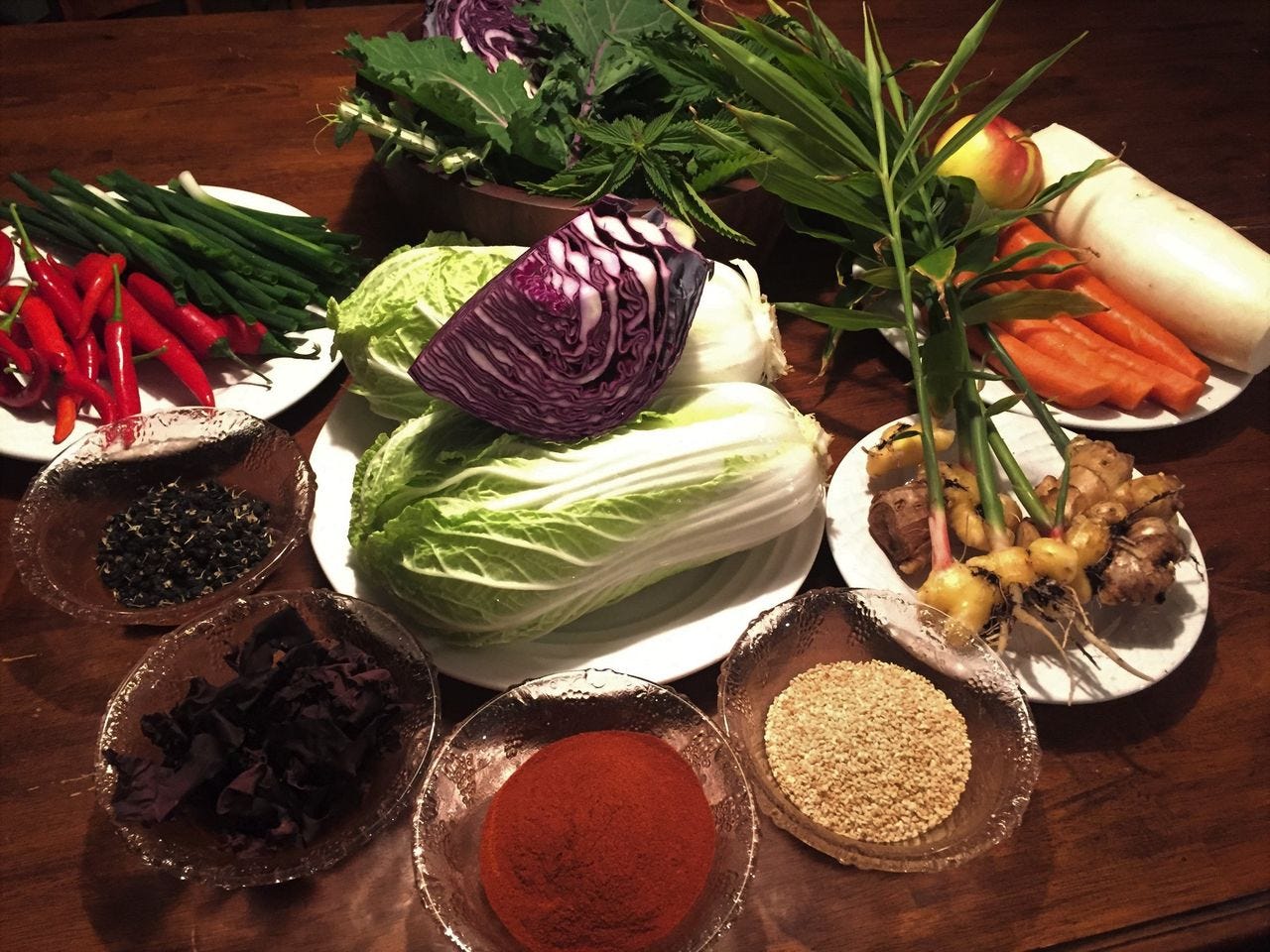



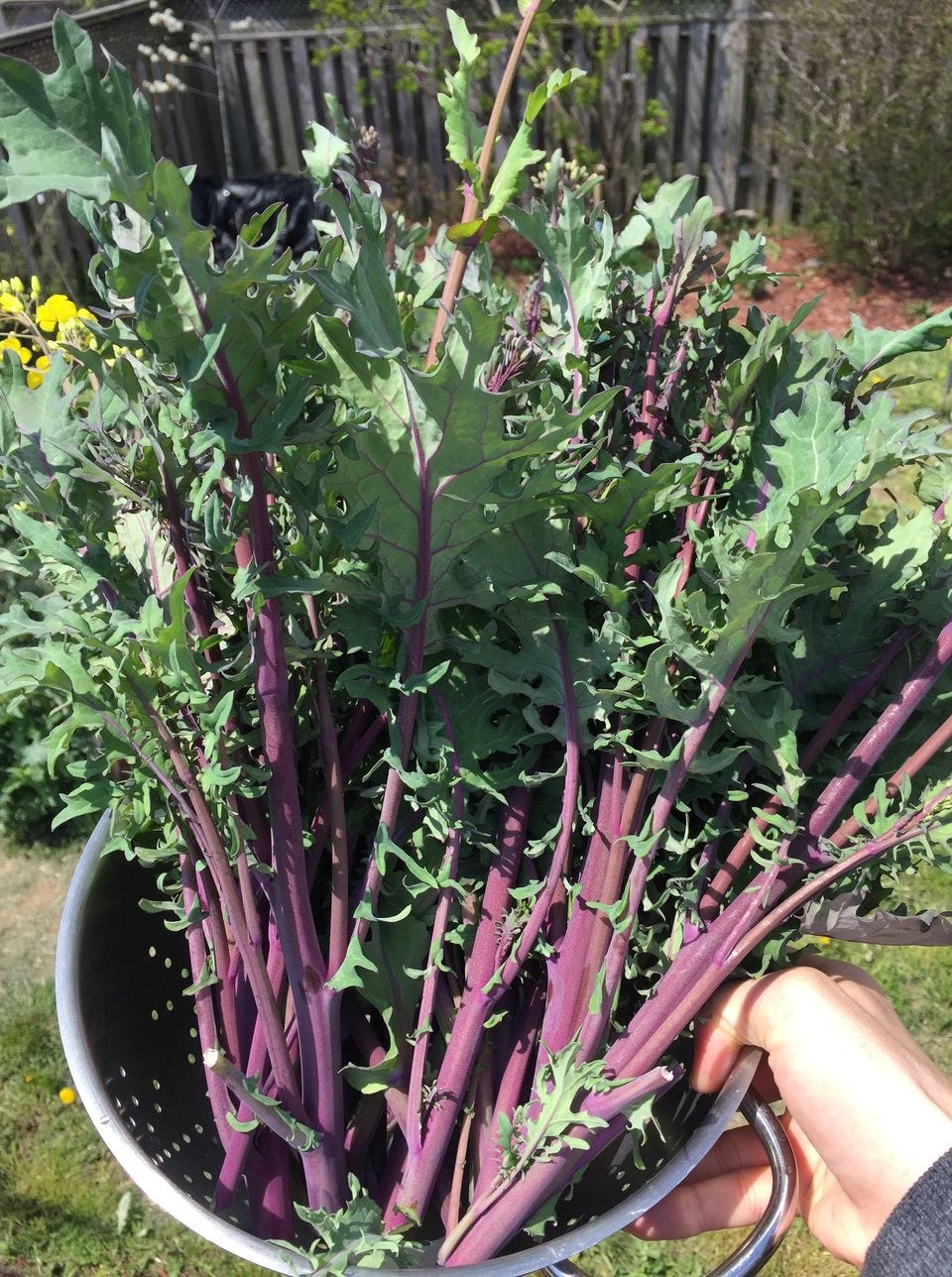
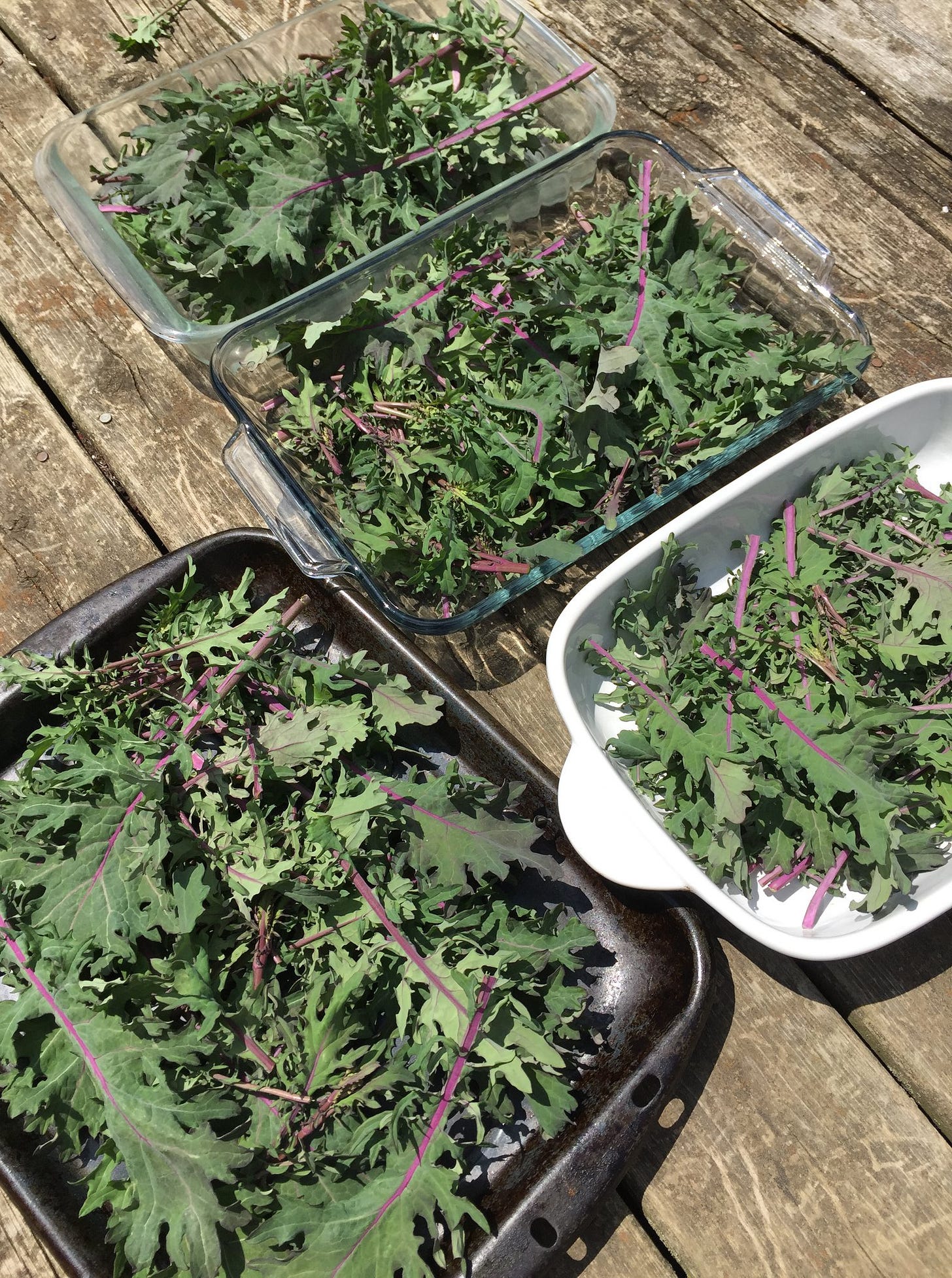
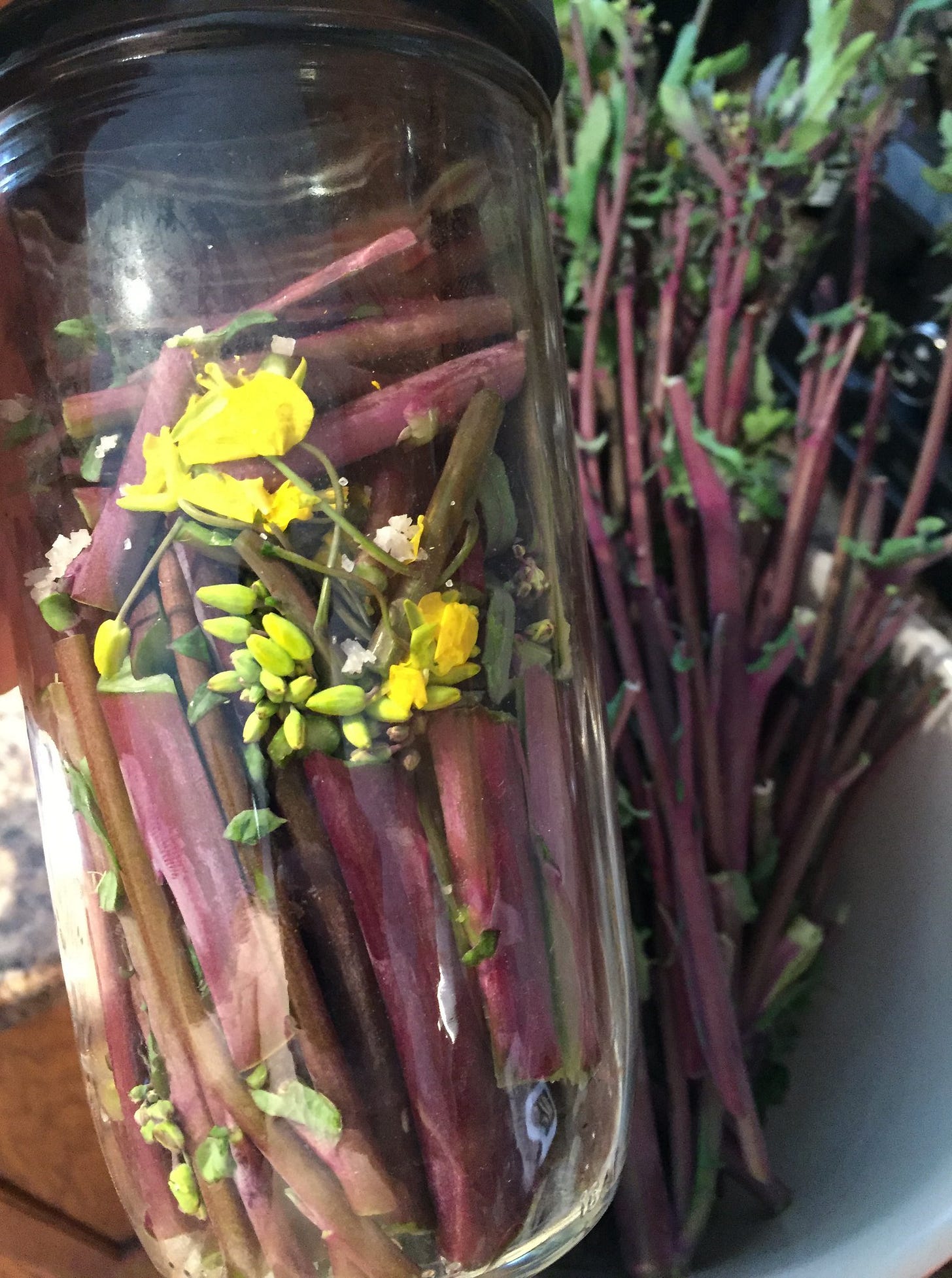
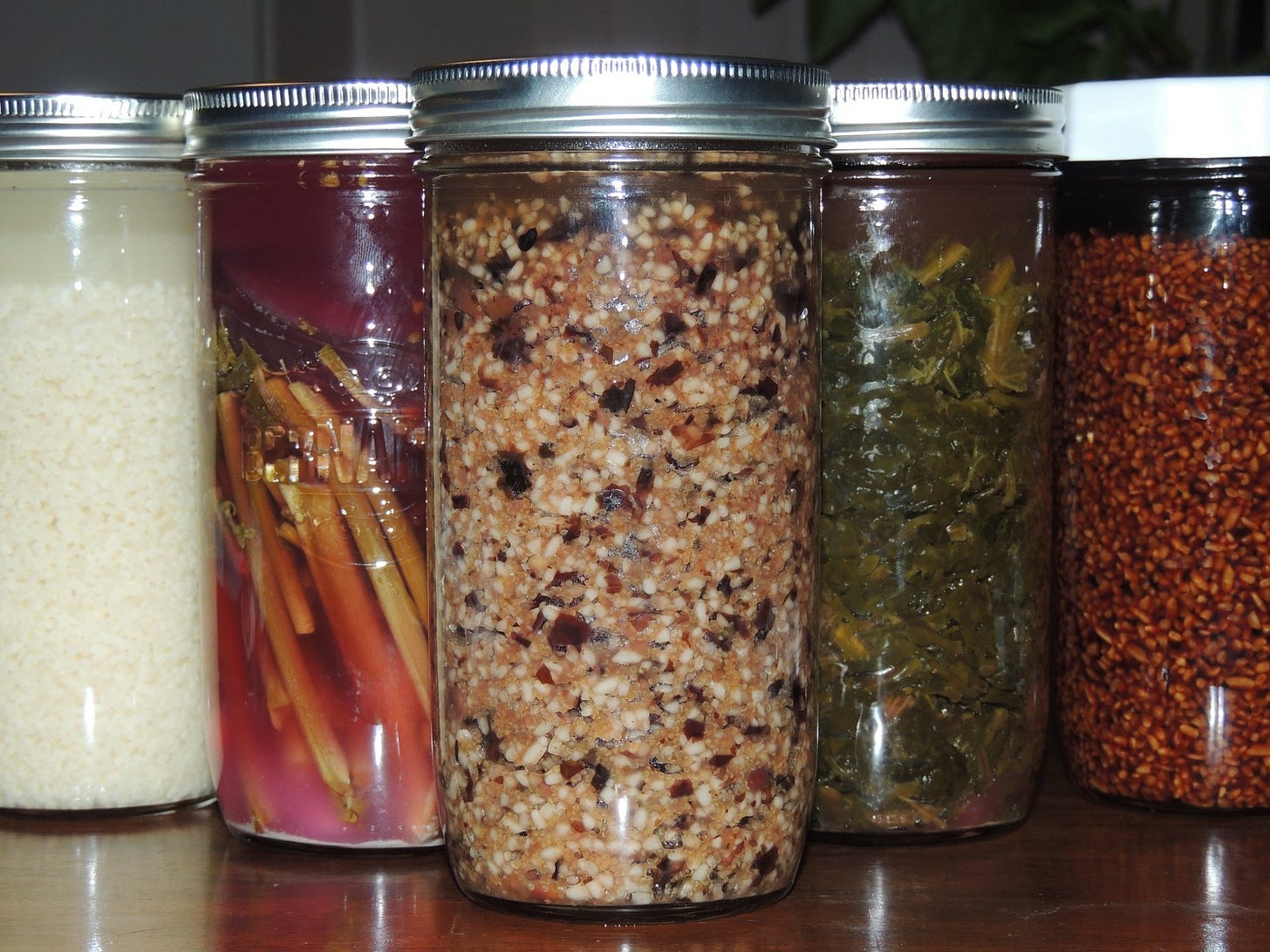

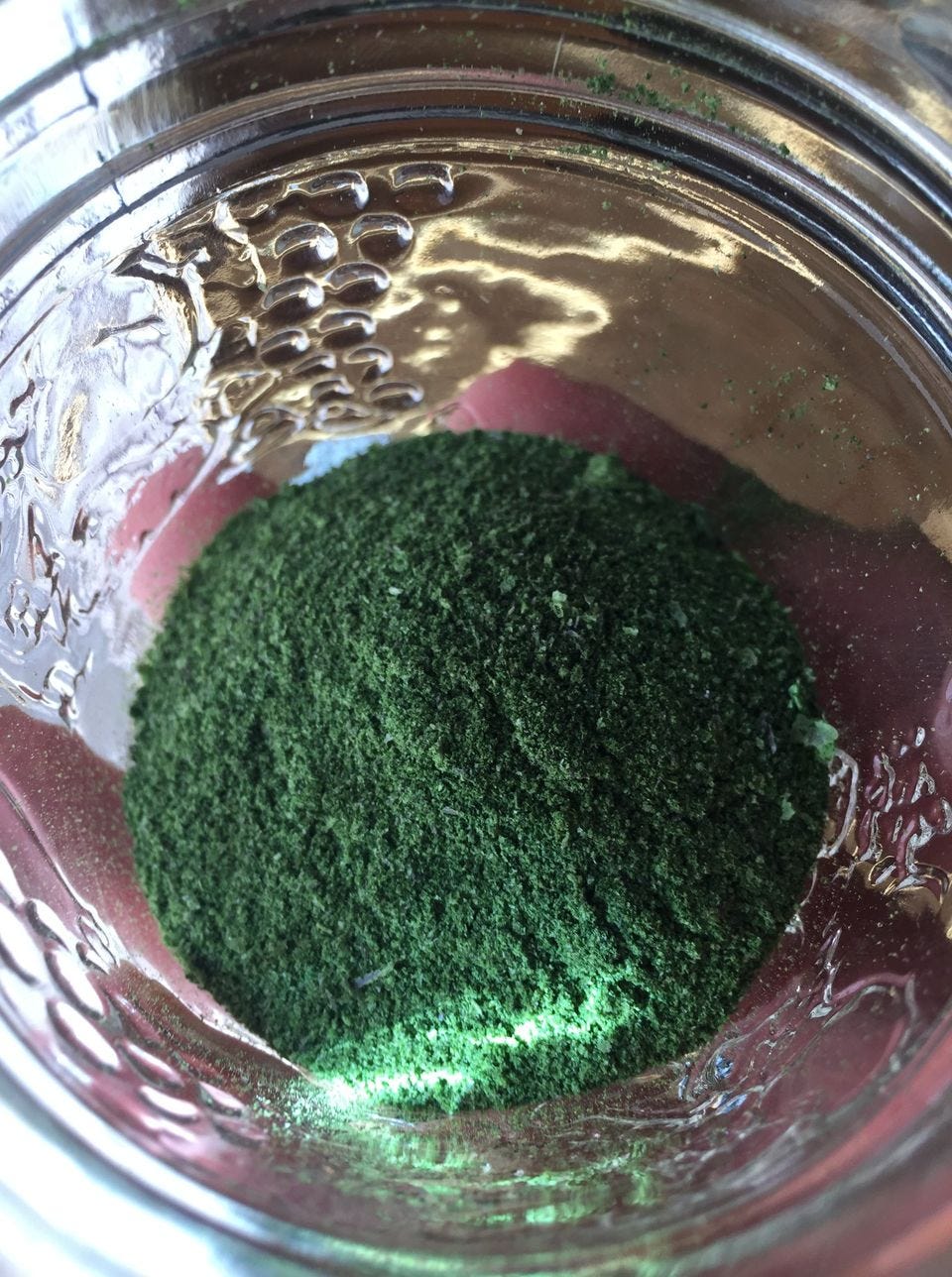

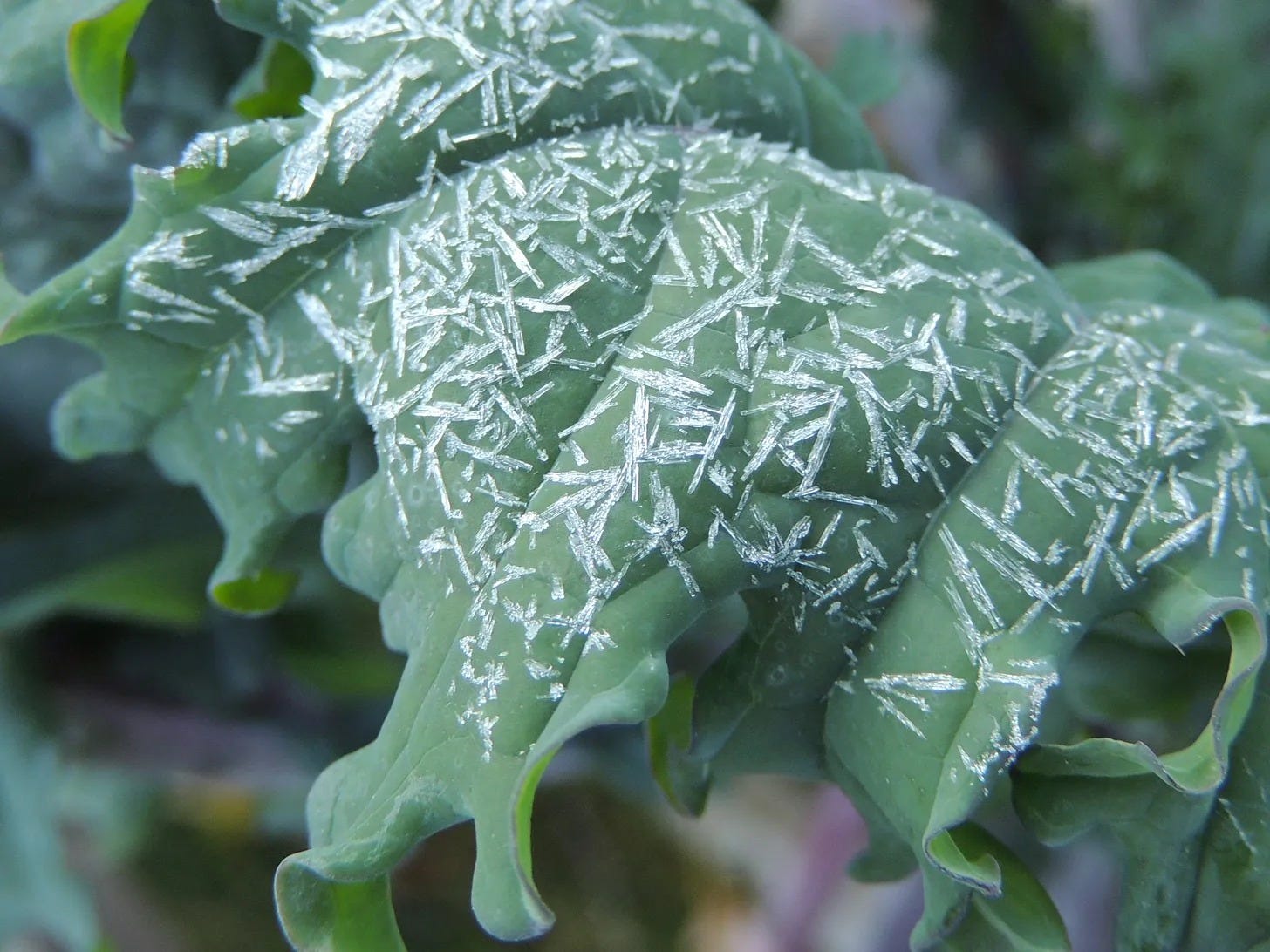
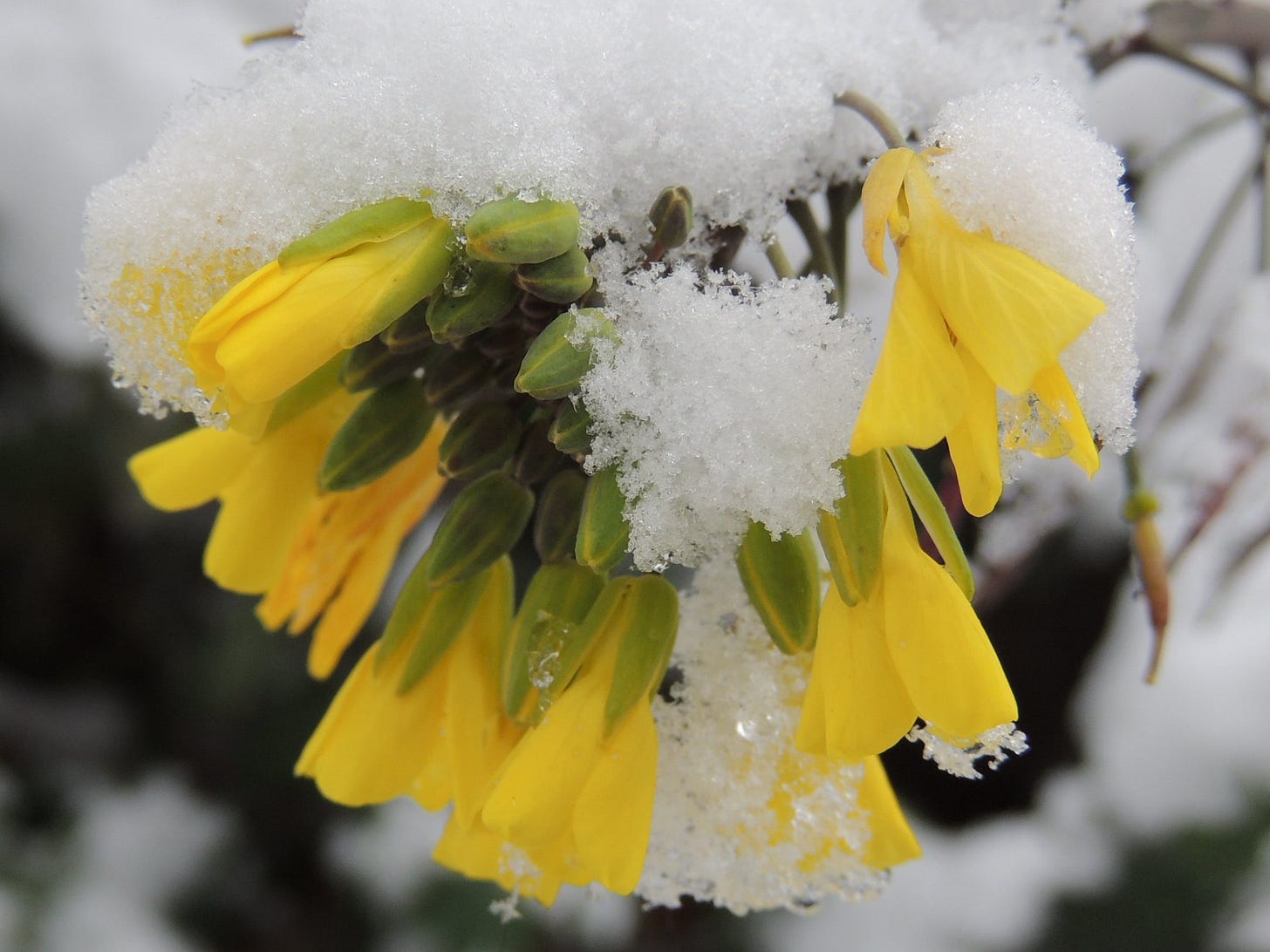
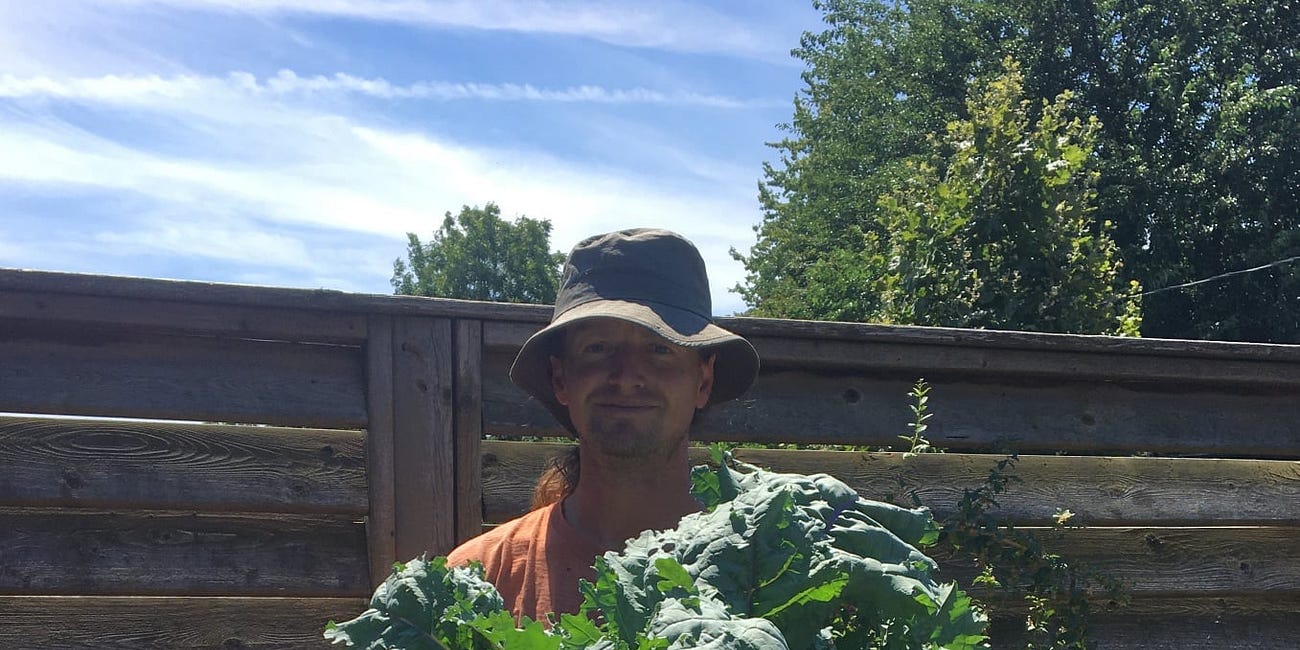
If kale is regenerative in the garden, it should be retained there instead of being fed to those who revile it.
Hey Gavin...while we're on the subject of kale and brassicas in general, are you guys plagued by Swede Midge in your neck of the woods? Came in to these parts (Eastern Townships) about 5 years ago and that which was previously "bulletproof" is now susceptible. I mean EVERYTHING. Cauliflower, kale, cabbage, one of my root cellar staples - Gigante Kohlrabi - Everything!
On another note...we've been getting so much rain in the last 6 to 8 weeks that many things are simply failing altogether. I've never seen anything like it. And then of course are the strange cloud patterns which, being observant, I deem to be "not of this earth", if you get my drift. My nano-particle drift.